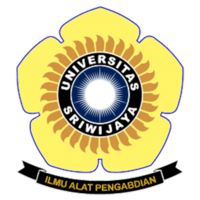Pupuk Organik Cair asal Limbah Kulit Nanas untuk Perbaikan Lahan Karet Rakyat di Payaraman Barat, Ogan Ilir
Abstract
Setyawan D, Maren A, Budianta D, Warsito W, Priatna SJ. 2022. Liquid organic fertilizer from pineapple peel waste for rural rubber land improvement in West Payaraman, Ogan Ilir. In: Herlinda S et al. (Eds.), Prosiding Seminar Nasional Lahan Suboptimal ke-10 Tahun 2022, Palembang 27 Oktober 2022. pp. 878-884. Palembang: Penerbit & Percetakan Universitas Sriwijaya (UNSRI).
Rubber plantations are an important source of income in Payaraman District, Ogan Ilir and are generally cultivated on marginal lands. Meanwhile, pineapple peel waste that is not utilized will pile up into garbage even though it can be used as liquid organic fertilizer or compost. This study aimed to assess the effectiveness of POC pineapple peel waste in increasing soil N, P, and K nutrients and latex production. The study used a split plot design with the main plot of weed clearing (without and with weeding) while the subplots were POC doses of 0, 1, 2, 3 and 4% (equivalent to 0, 10, 20, 30 and 40 ml POC). per liter of water). Watering is done with a frequency of once per week. The treatment was repeated three times. The experimental unit consisted of 30 mature rubber trees. Latex is collected weekly. The results showed that the POC of pineapple peel had a pH of 3.95; 0.05 % N; 0.027 % P and 0.19 % K. The initial soil pH value from 4.13 to 4.18 increased to around pH 5.0 after POC application for 4 weeks. Likewise, the total N content is about 0.26%; P-total 100 mg/kg and K-total 14 mg/kg. ANOVA results showed that the best treatment was a dose of 30 ml/liter with a latex production of 770 g/tree. Based on these observations, it can be concluded that the POC of pineapple waste has the potential to improve soil fertility and latex production. Weeding is important to reduce nutrient competition with rubber plants.
Keywords
Full Text:
PDFArticle Metrics
Abstract view : 319 timesPDF - 2436 times
Refbacks
- There are currently no refbacks.

